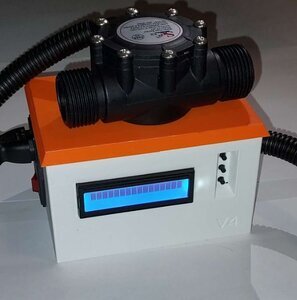
College of Engineering Unit:
The Smart Water Flow Sensor project is our solution aimed at addressing the issue of water waste in households by effectively monitoring water usage in the building's pipes. The core technology behind this project revolves around the utilization of a water flow sensor that collects data pertaining to the flow of water through the pipes. This data is then processed by a microcontroller and transmitted wirelessly to an HTML page via Wi-Fi connectivity.
To provide users with convenient access to the water consumption data, the project incorporates an LCD screen that displays the information in near real-time. Additionally, a dedicated port in the local network's router has been assigned to allow users to easily monitor their daily water consumption. By letting individuals become aware of their water usage habits, the project aims to encourage responsible water consumption practices.
The Smart Water Flow Sensor project comprises several interconnected components, including the water flow sensor, Arduino Uno microcontroller, ESP8266 transceiver, and custom power supply. These components are housed within a water-resistant enclosure, ensuring their protection and durability.
In the development process, the team simulated and tested the electronic components before integrating them into the final printed circuit board (PCB) design. Simultaneously, the software aspect of the project was developed, which involves creating microcontroller code for data processing, calculations, LCD output, and user-controlled buttons. Additionally, the relevant code for network connectivity between the system and the user's Wi-Fi router provided easy and wireless access to the data stored.
Ultimately, the Smart Water Flow Sensor project offers a comprehensive solution for reducing water wastage in households. By detecting leaks, monitoring water consumption, and providing real-time feedback to users, this product promotes sustainable water usage practices and encourages individuals to actively contribute to water conservation and monitoring, while providing these benefits at an affordable cost.